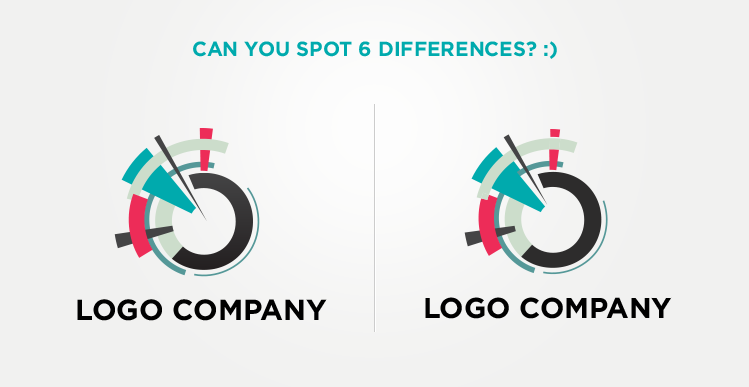When not working on Paiyak Development work, our designer often spends time on design competition sites in order to keep her design skills sharp and gain experience with a variety of client communication styles. Design competition sites are problematic in many ways, but one of the most obvious areas involves the possibility for plagiarism.
If a contest is not made “blind,” all of the designers can see the current design options and they know what has been rated well and what types of designs are being eliminated. This can lead to a better understanding of what the contest host desires. However, it can also lead to designers “stealing” elements of the leading designs. In essence, it is a hotbed for copying and claims of plagiarism.
The other day, Iva got called out by another designer for, “copying,” her work. Both logos featured a progressive height element. Other than that, the designs used different typography, different colors, and different text. They also implemented the progressive height concept differently. The powers-that-be sided with Iva, saying that the designs were different enough to be acceptable. However, the entire experience got me thinking about the concept of copying when it comes to professional design work.
The Conversation of Design
Visual art, just like writing, is not done in a bubble. It is inspired by real life and the art that has come before it. Some aspects of design become basic elements that elicit certain responses and associations in the viewer’s mind. The most basic example of this is the use of colors in corporate design. Although trends change, at any given time certain colors are associated with various emotions and concepts. However, the basic elements that make up design are much more complex than just colors. It involves shapes, progressions, and associations that have all become representative of something more.
Design ends up being a conversation in which the designer attempts to utilize enough standard representations among fresh, new ideas in order to inspire the viewer to think or feel a certain way. In this sense, it is important for designers to utilize and build on design that has already been incorporated into the greater conversation of design.
The Evolution of Copying
Was it Picasso who said, “Good artists copy, great artists steal?” Most people think so, and there have been some great debates about what he meant. While stealing or copying outright is still thought of as wrong in the art community, the concept of inspiration and development of an idea is accepted. Exactly where the line is drawn is a personal question that is different for each designer.
As the world of art and corporate design continues to blur, the question of inspiration vs. stealing is perhaps even more important in web design and logos. In a platform where the end-goal is for the design to be understood by a large population rather than the artist to express themselves, the potential negative effect of having a design stolen becomes much more costly.
The Cost of Copying
In the realm of corporate design, if you fail to utilize the language of design, then you are left out of the conversation altogether. However, copying ideas too closely can lead to a direct negative financial impact on designers and clients who use stolen designs. There is a delicate balance between individuality and conformity when it comes to branding, and copying too closely will usually have negative results for everyone involved. Of course, all of this is applicable to complete designs that make it into the public realm.
The Problems With Competitions
With design competitions, the problem is that there is a conversation involved in developing the final design, but the individual designers are not set up to collaborate with each other. Instead of asking a design team to build a design, a competition pits individuals against each other in a way where only one designer’s work is rewarded. In a situation like that, no wonder people would want to protect their choice of elements fiercely. Whereas in a collaborative environment, once an element is added to the conversation it is considered open to further construction, in a competitive environment the further use of an introduced element becomes taboo.
In the end, I think my short dive into the realm of visual copying and stealing has been interesting, but I have ended up with more questions than answers. Ultimately, it seems that the concept of stealing designs is defined on a personal, subjective level. I guess it is the same when it comes to writing, but I will stay in the realm of words, where plagiarism feels somehow more tangible.
